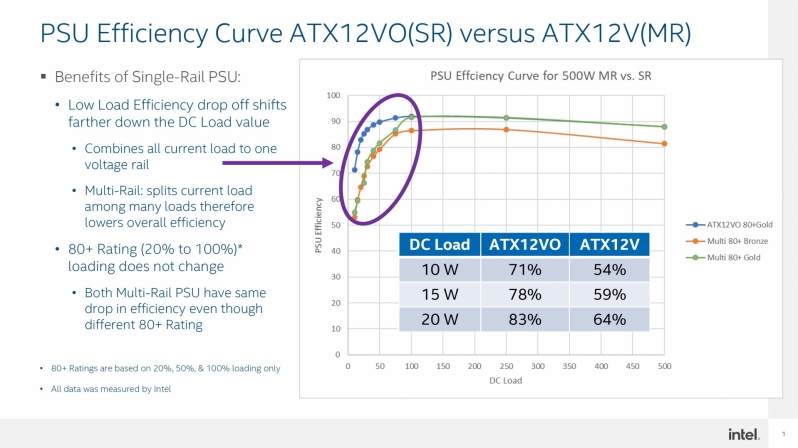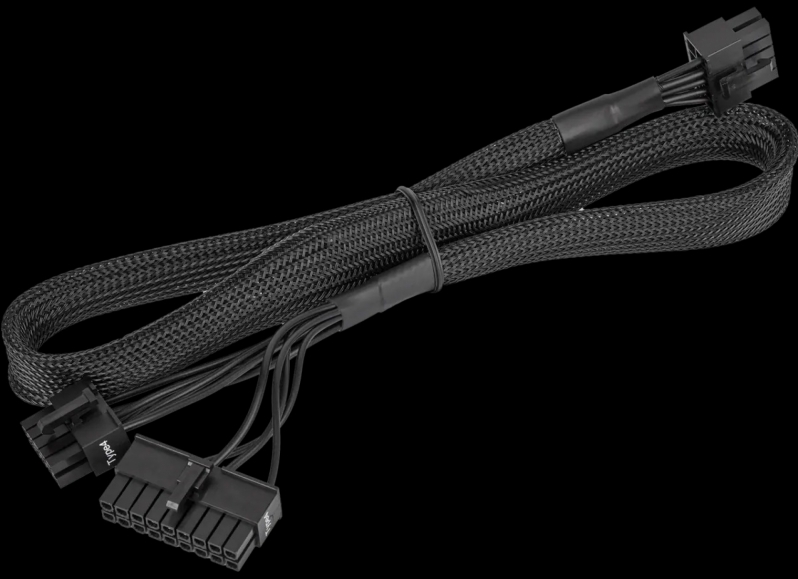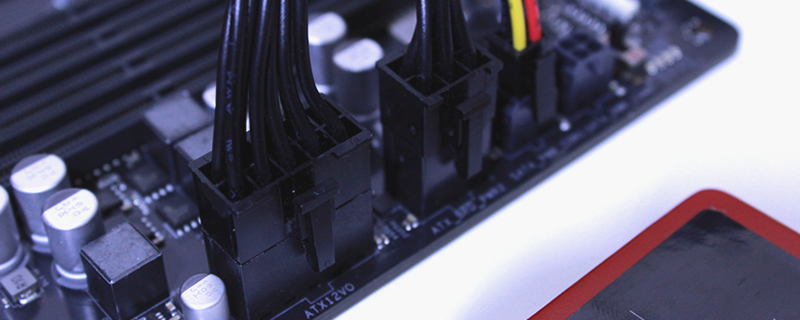What Journalists Got Wrong about Intel’s ATX12VO Standard
What Journalists Got Wrong about Intel’s ATX12VO Standard
There have been many reports recently surrounding Intel’s ATX12VO power standard, and many of them include false information and showcase a fundamental understanding of the technology that underpins the standard. Yes, ATX12VO will represent a change for PC builders, but these changes are not as “awkward” as many have reported.Â
Many of these reports follow the work of Igor’s Lab, which has reported that motherboard manufacturers and PSU makers have shown a “united front of rejection to Intel’s ATX12V0 project”. Motherboard manufacturers want to maintain today’s power supply standards, as while Intel’s ATX12VO standard promises higher levels of power efficiency, it has its drawbacks for manufacturers.Â
In their reporting on Igor’s Lab’s article, PC Gamer has added confusion and misinformation into the mix by reporting on a standard that we believe they are incredibly misinformed about. With PC Gamer being such a widely read publication, we believe that some light needs to be shed on this matter to ensure that the PC community is well informed.Â
We looked into Intel’s ATX12VO power standard earlier this year, looking into the standard’s upsides and potential downsides. Intel’s aim with ATX12VO is to increase the power efficiency of modern PCs by removing many of the legacy trappings of older PC standards. Our full analysis of ATX12VO is available to read here.Â
Factual Errors…
PC Gamer’s report starts by highlighting Intel’s desire to push their ATX12VO standard with the release of their 12th Generation Alder Lake processors, with PC Gamer stating that change to ATX12VO “would involve big, and potentially awkward changes for manufacturers of both motherboards and PSUs” and that “Intel has been met with a “united front of rejection” from both sides.”
Industry experts have confirmed that MSI, Gigabyte, ASRock and ASUS have all made multiple proof of concept ATX12VO motherboards. In the case of ASRock, the existence of their ATX12VO Z490 Phantom Gaming 4SR is well documented, and ASUS has their Z490 Prime-S ATX 12VO design.Â
When it comes to “potentially awkward changes”, it is worth remembering that not much has changed with ATX12VO; for the most part, it is the same ATX12V standard that we have had for the past 20 years. The difference is that ATX12VO is 12 Volt Only, removing the need for 5V and 3.3V power on the PSU side.Â
Later in their article, PC Gamer says the following “Buy a whole new, probably more expensive PSU, as well as a new mobo just for Intel Alder Lake? No thanks.” For starters, ATX12VO power supplies are simpler in design than their ATX12V equivalents. The very nature of Intel’s ATX12VO is that it only needs 12V power, making it much easier to produce than PSUs that also need to deliver 5V and 3.3V power. ATX12VO PSUs should be cheaper than regular ATX12V PSUs, not more expensive.Â
ATX12V to ATX12VO is not a move from AC to DC…
The most fundamental flaw with PC Gamer’s piece is that it overblows the changes requires to create ATX12VO motherboards and power supplies. PC Gamer says that the power standard “would require a complete rehash of motherboard and component designs” and in the same paragraph claims that “The proposed power standard would deliver just a single rail of 12V direct current through a 10-pin connector—as opposed to the current 24-pin, alternating current standard”.Â
Let’s make things clear; all PCs run on DC power. All PC power supplies are AC to DC converters. Had Intel suggested that PC makers convert from an AC standard to a DC standard, it would be right to call ATX12VO a standard that would require a complete rehash of motherboard and component designs”, but the fact of the matter is that ATX12V and ATX12VO are both standards that deliver DC power to PCs.Â
While ATX12VO presents challenges to PC manufacturers, an AC to DC conversion is not one of them…Â
 Â Â
 Â
Why Intel created the ATX12VO standard
The simple way to think of ATX12VO is to say that it is an ATX power supply standard that only features a 12V rail. That’s why it is ATX12VO; it’s ATX 12 Volt Only!
Standard ATX power supplies utilise multiple rails to deliver their power, offering users 5V and 3.3V rails in addition to their 12V rail. While many PC parts only need 12V power, others require these lower voltages to function correctly, which means that power supplies need to do multiple voltage conversions at variable loads.
The complexity of traditional power supplies makes multi-rail power supplies inefficient at lower wattages, which means that your PC is most inefficient when it is at idle and other low power states. Most desktop PCs are used for light tasks like internet browsing and video playback, making all of those low wattage inefficiencies add up to create a lot of wasted electricity, especially on a global scale.Â
ATX12VO power supplies increase the efficiency of low power draw scenarios by using a single 12V rail exclusively. This design also makes ATX12VO power supplies less expensive to produce, as only one voltage conversion is necessary. 5V and 3.3V conversion will occur on the motherboard for the components that need it, so some of these decreased PSU manufacturing costs will be transferred to higher motherboard costs. Even so, ATX12VO systems promise to deliver higher efficiency levels at low wattage workloads.Â
When PSU load increases, the efficiency of standard PSUs reach their peak, making ATX12VO PSUs no more efficient than traditional PSU designs. That said, most systems do not stay at 50-100% loads under most situations, assuming that your system isn’t exclusively used for rendering or gaming. The graph below showcases the power efficiency of ATX12VO PSUs when compared to ATX PSUs.Â
 Â Â
 Â
I will need a new PSU for ATX12VO? Not really…
While ATX12VO systems should be paired with ATX12VO power supplies to get the largest efficiency gains from the standard, there is a way that older PSUs can be upgraded to support newer ATX12VO motherboards.Â
Given the nature of ATX12VO, which exclusively uses power supplies 12V rail, there is nothing that stops standard ATX12V power supplies from being adapted to support ATX12VO systems. Corsair has already created an ATX12VO adaptor for its Type 4 power supplies, and there is no reason other PSU producers cannot follow suit.Â
While PSU manufacturers will need to create ATX12VO power adapters for their existing units, this is a cheaper solution for consumers than buying a new PSU. If Intel and its hardware partners really wanted to support ATX12VO, adaptors like these would be a simple solution to their early compatibility problems.Â
 Â Â
 Â
The real problem with ATX12VO
So why wouldn’t motherboard manufacturers and PSU makers want to adopt the ATX 12VO standard? The simple answer is that it creates segmentation within the PC industry and increases motherboard costs.
While ATX12VO jettisons 5V and 3.3V from the world of PSUs, these voltages are still required on PCs for USB connections, SATA power, and anything else that could need 5V or 3.3V power. DC-to-DC converters provide these voltages on ATX12VO motherboards, and those converters cost money. While ATX12VO power supplies will be cheaper to produce (due to their simplified nature), ATX12VO motherboards will be more expensive.Â
Higher components costs hurt the margins of motherboard makers. Beyond that, creating separate ATX12VO and standard ATX12V motherboard lineups would split the PC industry into two camps. Having to support ATX12V and ATX12VO product stacks would be problematic for PSU manufacturers and motherboard makers, as they must ensure that consumers are informed enough to purchase the correct PSUs for their systems and be willing to stomach the costs of supporting both power systems.Â
Does ATX12VO need AMD’s support to succeed?Â
For ATX12VO to succeed, it needs widespread industry support. We can all agree that heightened power efficiency is a good thing, but the PC market needs more than that to move away from the 20+year-old ATX12V standard.Â
Being able to power a PC from the early 2000s using a new PSU from 2021 is a great thing, and ATX12VO will break that long line of backwards compatible power supplies. For the PC market to move to ATX12VO, Intel can’t be the standard’s only major backer. Either AMD needs to back ATX12VO, or Intel needs to get the world’s governments to push for this shift.Â
On a global scale, the efficiency gains of moving to ATX12VO will deliver staggering energy savings. Whether or not these savings are worth the difficulties involved in such an industry-wide transition may be debatable, but that doesn’t mean that the goal isn’t laudable.Â
The largest problem that the ATX12VO standard faces is that its adoption requires a level of industry-wide coordination that many manufacturers do not want to commit to. Today’s ATX12V standard isn’t broken, so why would manufacturers want to fix it?Â
Transitioning the world’s PCs to ATX12VO is a difficult task, especially for the DIY PC market. The ATX12V standard is so prevalent that it is used to power all mainstream consumer motherboards today. The idea of having motherboards that are only compatible with new PSUs is a huge negative for PC builders, as many of us have already invested in high-efficiency ATX12V PSUs and have no intention of replacing them anytime soon.Â
While ATX12V to ATX12VO PSU adaptors are possible, it relies on PSU manufacturers backing the transition and motherboard manufacturers being willing to support the change. Beyond that, consumers also need to be willing to move to ATX12VO motherboards.Â
Manufacturers don’t want to support ATX12V and ATX12VO motherboard ecosystems concurrently, and there is understandably pushback against replacing a 20-year-old set of standards that arguably isn’t broken.Â
While there are legitimate reasons for motherboard manufacturers and PSU makers not to adopt Intel’s ATX12VO standard, we hope that this article has clarified a lot of the misinformation surrounding the standard.Â
As mentioned previously, we have reported on the ATX12VO standard more deeply in our analysis here. In our report, we discuss the efficiency benefits of ATX12VO with real-world testing and look at the standard’s other advantages and pitfalls. We plan to update this report today to add additional information that reflects more recent ATX12VO developments.Â
You can join the discussion on Intel’s ATX12VO standard on the OC3D Forums.Â



